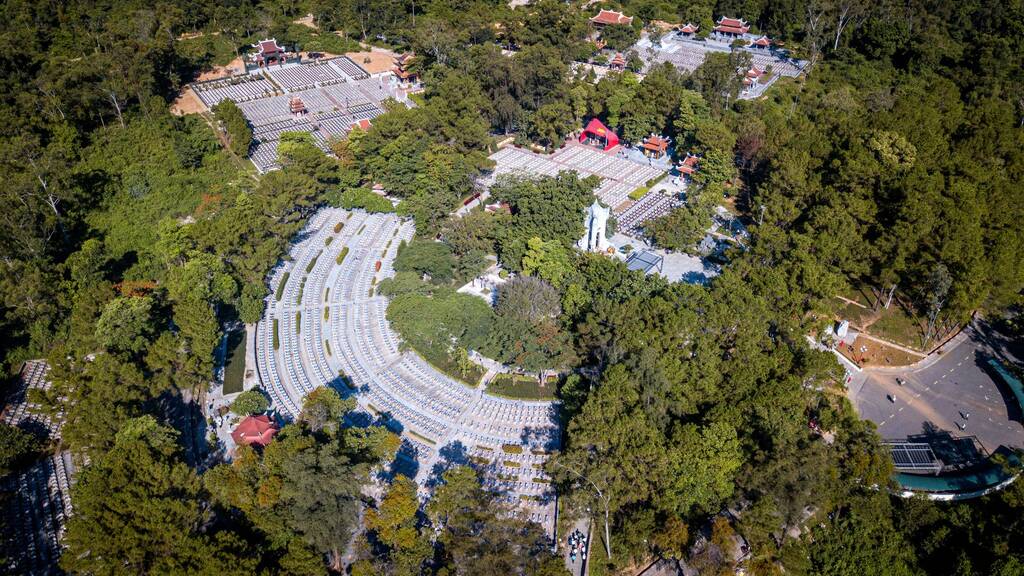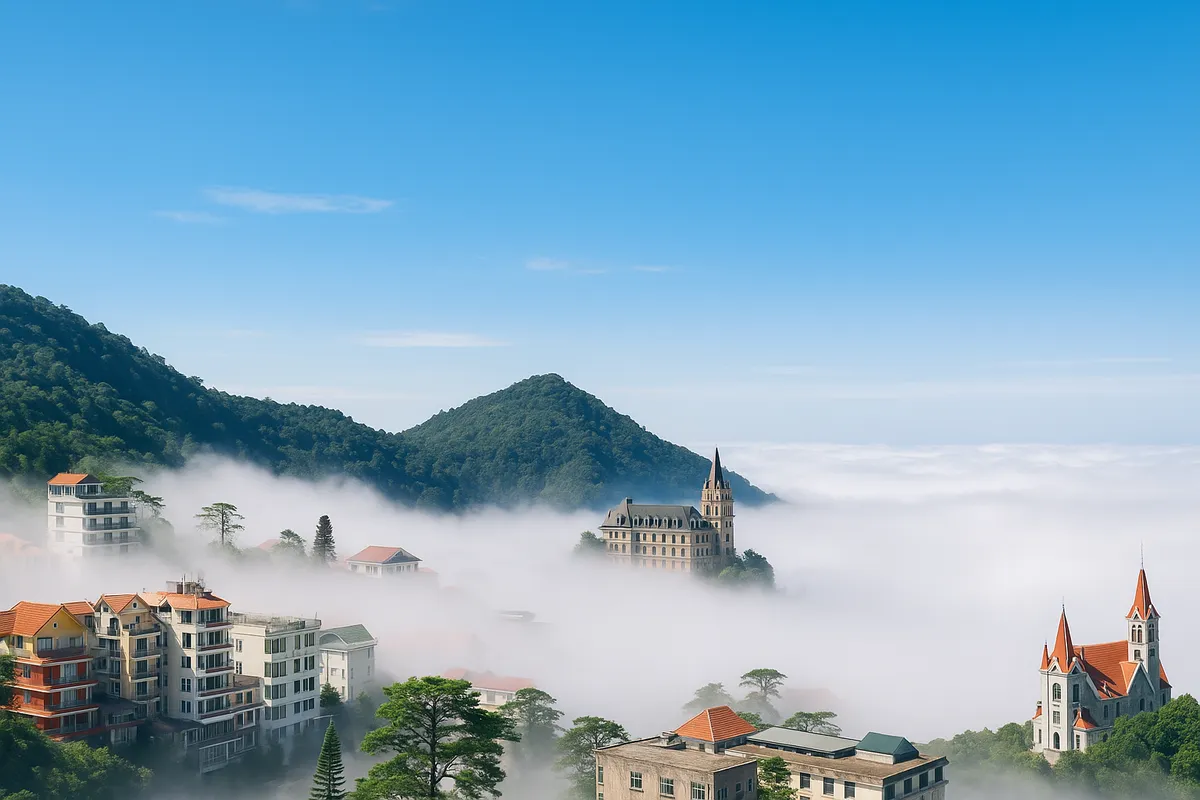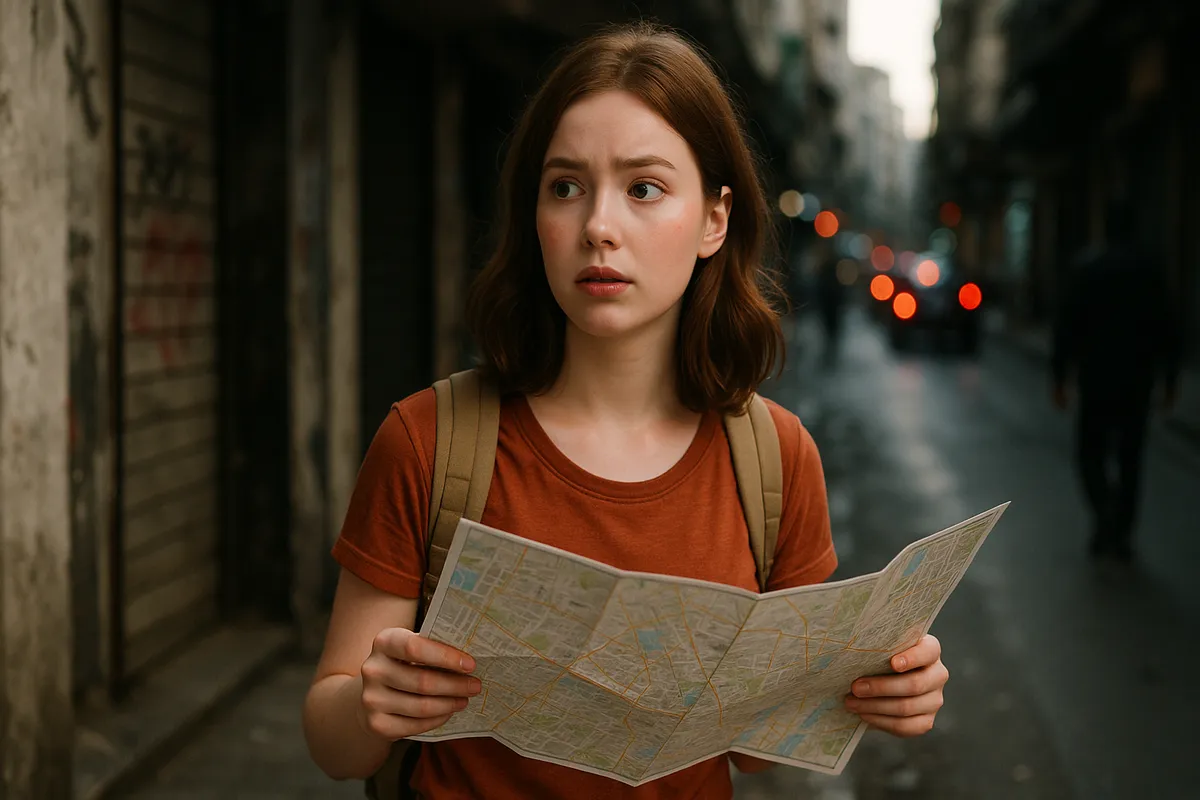Truong Son Cemetery and memories carved in stone
- Saturday, Apr 19, 2025, 17:54 (GMT+7)
Truong Son Cemetery and memories carved in stone
There are places where silence speaks louder than any somber music. No flashing souvenir stalls, no lines of tourists waiting to take selfies. Yet once you set foot here, it feels as if you've stepped through a portal in time, into a realm built not with bricks but with blood, tears, and unwavering patriotism. This is the Truong Son National Cemetery—not just a resting place for over ten thousand fallen soldiers, but a soul map etched into the red earth of central Vietnam, where each handful of soil whispers a quiet epic.
Perched on a gentle hillside facing west, overlooking the distant Ben Hai River, this cemetery resembles an eternal fortress. Spanning nearly 140,000 square meters, it doesn’t boast grandiosity. Instead, every design choice is humble—just like the spirit of those who rest here. Its main gate faces southeast, symbolizing life and hope, catching the day’s first rays. From there, a central pathway leads straight up to the Memorial Monument on the summit, standing precisely 32.4 meters tall—the exact average elevation of the legendary Truong Son Trail.
Unlike most monuments, this one is strikingly hollow, carved from white stone and missing three sides. It’s as if the structure itself aches to express the absence, the irreparable loss. Below it, thousands of identical graves stretch out, each cluster representing a province, forming a spiritual map of Vietnam.
Every element carries meaning. A bodhi tree grows behind the memorial—not planted, not watered, yet still lush under the harsh Truong Son sun. Locals believe it shelters the spirits of the unnamed heroes, as if even nature is determined to stand guard. And if you stand at the heart of the cemetery and look along the East-West axis, you’ll notice something uncanny: a perfect line connects the main gate, the monument, and the section for female martyrs. A straight path, as if declaring that in death, there is no rank, no region, no gender—only unity. A 20-year-old female fighter, a weary supply soldier, a young man from Bac Giang—they all rest here, side by side, bound together in this sacred ground.
Wander deeper and you'll find graves marked not with names, but with a simple stone carved with "Unknown." Not cold granite, but mountain rock with natural veins—each one a silent nod to a life never forgotten. A young visitor once said, standing before those unnamed stones made her stop complaining about life’s petty troubles.
Some gravestones carry poems, hand-written letters, even folk verses pulled from a soldier’s diary. On one, only four words are engraved: "Come home, Mother dear." Under Quang Tri’s fierce sun, these few words are enough to break even the strongest heart.
This cemetery is more than a grid of graves. It's filled with what one might call "memory objects"—a helmet resting on a tomb no one dares move, incense that always seems freshly lit though no one is seen nearby, or a faded family photo quietly pinned to a corner.
In the women’s section, a lesser-known tale is whispered. Locals say that on misty July mornings, one might spot a faint white wisp floating among the gravestones, like the hem of a traditional long dress. There’s no proof, but those who’ve seen it stand still, saying nothing—as if part of a sacred ritual only the soul understands.
If you come in the late afternoon, when golden sunlight begins to kiss the tombstones, you’ll realize this is not just a cemetery, but a silent symphony. The long shadows of trees, the rustle of dry leaves, all whisper the same truth: there once was a generation who lived, loved, and gave everything—so the next could walk in peace.
There’s another detail few notice. The paths between grave zones are paved with tiles that differ by region, corresponding to where the soldiers came from. It’s more than just thoughtful design—it’s a tribute: "You’ve returned to your homeland, but not in the way we ever wished."
And if you look closer, the flowers aren’t random. Each type reflects the birthplace or birth month of those buried beneath. Paper flowers bloom vibrantly in the Central region’s section. Lotus blossoms unfold quietly in the Northern zone. Sunflowers stand tall in the South. Life, in full color, rising from memory.
When visitors leave this place, they often don’t say a word. They simply turn back for one last glance—a look heavy enough to carry a thousand untold stories. Some places, like the Truong Son Cemetery, are not meant to be visited and forgotten. They are meant to be remembered, deeply and forever. A silent reminder that once, an entire generation gave all they had—so we could live.

 CHECKIN.VN
CHECKIN.VN








Share on